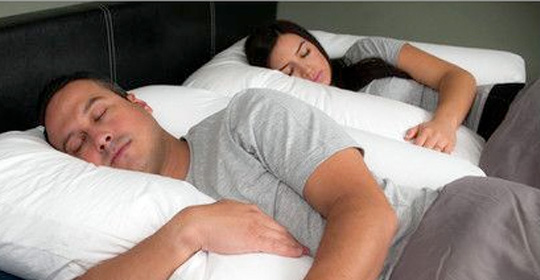
Positional Sleep Apnea
Diagnosis of sleep apnea is predicated on a sleep study that shows the average number of abnormal breathing events occurring 5 or more times per hour. This is the AHI, (Apnea-Hypopnea Index). With apneas you stop breathing for 10 seconds or longer; hypopneas are abnormally slow or shallow breathing events.
The upper airway is most vulnerable to collapse during supine sleep. When you sleep on your back, gravity drops the tongue back into closer contact with the tissues of the soft palate thus blocking the airway. This leads to loud snoring and the sleep breathing disorders just mentioned.
The American Academy of Sleep Medicine defines positional sleep apnea as having a lower AHI in the nonsupine position (sleeping on your side or stomach) as compared to the supine position (sleeping on your back). Simply put, sleeping on your side has fewer apnea and hypopnea events and better airflow.
The dilemma is how to remain sleeping on your side and stop from rolling over onto your back.
Below are a few solutions for positional therapy:
- Sewing or attaching a tennis ball to the back of a sleep shirt. It doesn’t prevent you from rolling over onto your back, it simply alerts you when you do and you roll onto your side.
- Body Pillows –hugging one, placing them between your legs, or stacking them up behind you are all easy targets to be pushed aside once you are asleep and on your back.
- Slumberbump is worn around the waist. The compartment is filled with air that prevents you from sleeping on your back. It is an affordable option to getting a better night’s sleep for you and your bed partner. Visit slumberbump.com.
- Rematee has inflatable bumpers which act as a barrier to prevent you from rolling onto your back. Visit antisnoreshirt.com.
- Zzoma is an FDA-cleared positional medical device worn around your upper torso to ensure you remain on your side. Visit Zzoma.com.
- Night Shift Sleep Positioner is worn on the back of the neck and vibrates when you start to sleep on your back, increasing in intensity until you change positions. Visit nightshifttherapy.com.
